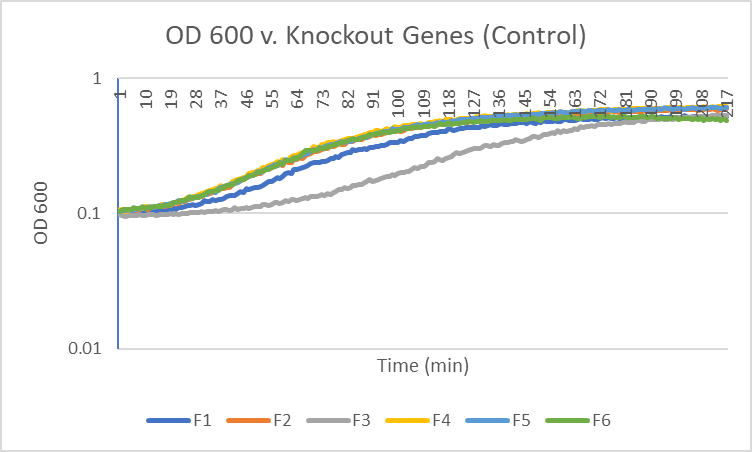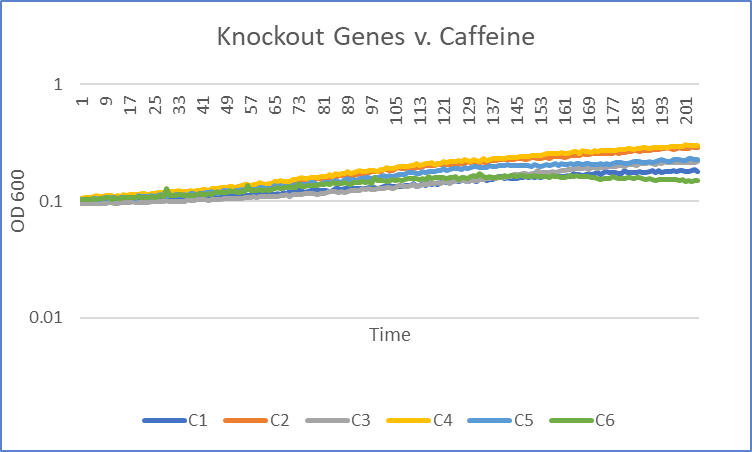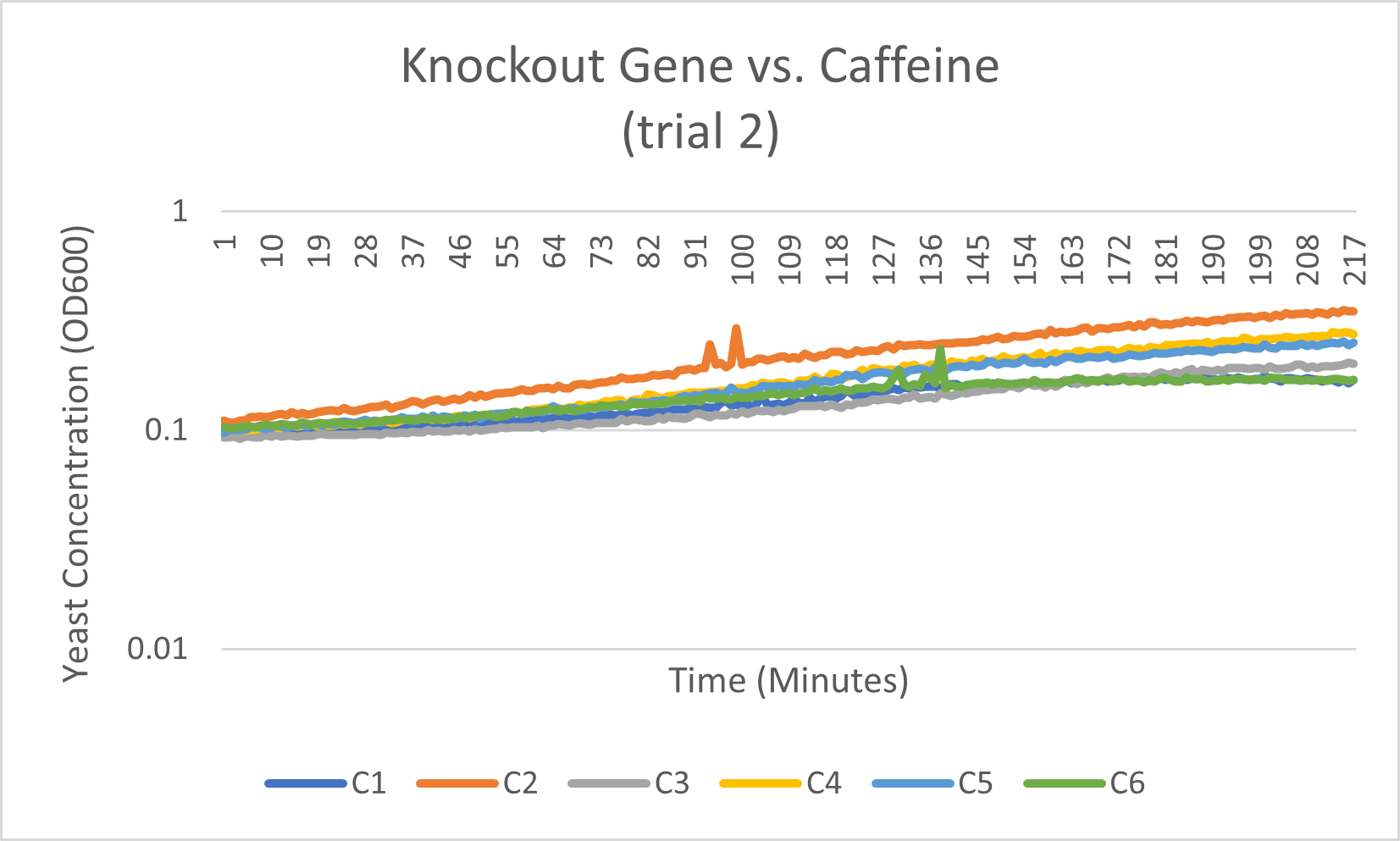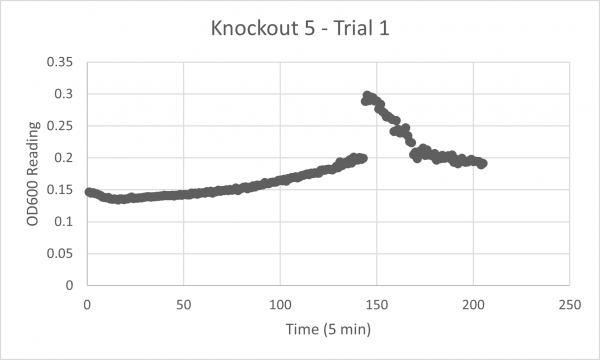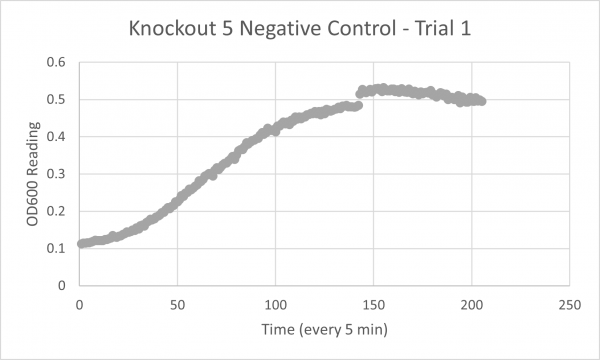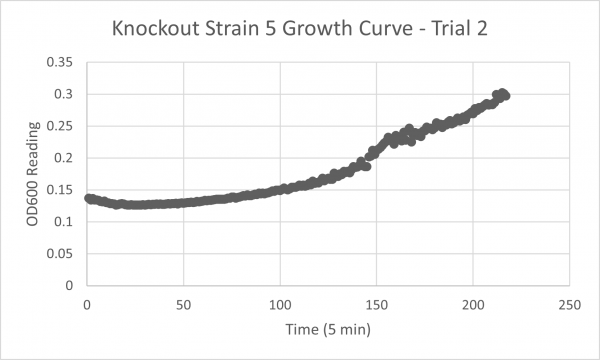Difference between revisions of "YCR095C"
(→Results) |
(→Results) |
||
| Line 67: | Line 67: | ||
[[Image:Knockout_5_Trial_1.png|600px]] | [[Image:Knockout_5_Trial_1.png|600px]] | ||
[[Image:Negative_Control_KO5_Trial_1.png|600px]] | [[Image:Negative_Control_KO5_Trial_1.png|600px]] | ||
| + | [[Image:Knockout_5_Trial_2.png|600px]] | ||
===Analysis/Conclusion=== | ===Analysis/Conclusion=== | ||
Revision as of 15:25, 16 December 2022
Share your knowledge...Edit this entry! <protect>
| Systematic name | YCR095C |
| Gene name | OCA4 |
| Aliases | |
| Feature type | ORF, Uncharacterized |
| Coordinates | Chr III:289258..288170 |
| Primary SGDID | S000000691 |
Description of YCR095C: Cytoplasmic protein required for replication of Brome mosaic virus in S. cerevisiae, which is a model system for studying replication of positive-strand RNA viruses in their natural hosts[1][2]
</protect>
Contents
Community Commentary
About Community Commentary. Please share your knowledge!
Ethanol
Caffeine
Interpretation
The average doubling time for the YCR095C (C6) gene in standard conditions was 99 minutes. Under caffeine stress, the average doubling time was 344 minutes. That is a 237% increase in doubling time which means that cell growth was negatively affected (slowed down) by this type of stress.
<protect>
References
See Help:References on how to add references
- ↑ Huh WK, et al. (2003) Global analysis of protein localization in budding yeast. Nature 425(6959):686-91 SGD PMID 14562095
- ↑ Kushner DB, et al. (2003) Systematic, genome-wide identification of host genes affecting replication of a positive-strand RNA virus. Proc Natl Acad Sci U S A 100(26):15764-9 SGD PMID 14671320
See Help:Categories on how to add the wiki page for this gene to a Category </protect>
UW Stout/FA 2022 Glycerol Media
Introduction
Following the UW-Stout/Glycerol FA22 protocol, 5 knockout strains of yeast cell were tortured within a glycerol media solution.
